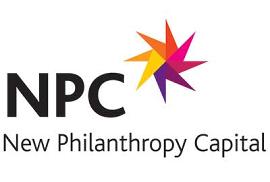A version of this post was originally published by New Philanthropy Capital (NPC).
 Last October, I had the opportunity to visit London and spend some time learning about the UK social sector, at events such as the excellent NPC Ignites conference.
Last October, I had the opportunity to visit London and spend some time learning about the UK social sector, at events such as the excellent NPC Ignites conference.
On this trip, I was impressed by people’s sense of pride in the country’s long history of public service provision. But I also heard clear notes of anxiety about the present and future of the sector, given converging trends such as budget cuts and privatisation.
As the government’s role changes, and the public service sectors become ever more complex, it is increasingly important for citizens, service providers, and policymakers to have reliable ways of finding up-to-date information about which institutions provide which services for whom.
Towards that end, the present moment poses many challenges—and, likewise, many opportunities.
It’s hard to know where to go to get help
Conversations on this trip revealed many familiar patterns.
Resource directory information is critical for many kinds of people in different ways—and many described a struggle to find reliable sources of it.
Of course, this information is critical to people in need of various kinds of assistance.
Furthermore, service providers in almost any field need resource data to help them direct people with complex needs to various kinds of external assistance.
And resource data also enables policymakers, funders, and active citizens to ‘see’ the allocation of services on a macro level—in correlation with health indicators and other data—in order to understand where more resources are needed, and which programmes are or are not working. In my conversations with non-profit sector researchers, policy-makers, and funders, I heard a common refrain: lots of people talk about data-driven evaluation, but it’s hard to actually do it if there isn’t a baseline of accessible data about who is actually doing what.
Each of these needs entails different uses of the same data—uses that are so different, no one single website or application can address all of them. And collecting and maintaining this information is laborious work—involving many phone calls and much data entry. Since no single institution is responsible for collecting information about all services, what we see in the U.K. today is a siloed landscape of fragmented information which offers people considerably less value than the costly sum of its parts.
This is a dilemma—but a resolvable one
The good news is that we no longer live in an either/or world. Community resource directory information can be made available as ‘open data’—freely available for anyone to use—that is ‘interoperable’, meaning that it is compatible with different kinds of technologies and data. In other words, the required information can be published just once, yet used many times in many ways.
There are a number of developments across the UK’s government, not-for-profit, and civil sectors which suggest various opportunities to approach this problem in new ways.
The UK’s Government Digital Service has already published some resource directory data, which claims to offer ‘public services all in one place’.
The Oxfordshire VCS has a standardized data specification for the publication of its data about its charitable services.
Meanwhile, next-generation mobile-friendly applications—such as FutureGov’s Scout and Lantern—demonstrate that content, when available, can be made actionable even for people with relatively low digital literacy.
We have to work together
However, each of these advances appears to be stepping forward in isolation from each other. Without cooperation across sectors and localities—and between actors like referral providers, funders, and governments—the fragmentation of this domain may get even worse over time. As NPC’s recent report Tech for common good points out, it makes very little sense for organisations to try and tackle these problems in separation from one another.
Towards that end, we at Open Referral—an initiative that aims to bring together these pieces of the resource directory puzzle—are facilitating multi-stakeholder cross-sector cooperation, to promote the publication of resource data in consistent, ‘open’ formats. Our vision is a world in which reliable information about public and charitable services is easy to find and be used by anyone, in whichever way best works for them.
So far we’ve developed a common language that can enable different kinds of resource directory information systems to ‘talk’ to each other. We’ve developed interoperable tools that people can easily redeploy to share resource data in various ways. And we’ve done this through an open participatory process among a community of practice.
There is much more work ahead. We need people with firsthand insight to be actively involved in experimentation and evaluation. Yet we’re hopeful about these beginnings, and eager to integrate this work with broader efforts—such as the digital transformation work which NPC is helping to lead—to develop collaborative, sustainable solutions to boost the efficiency and efficacy of the social sector.
Interested in starting a pilot project in your community? Reach out to me at [email protected]. You can also join the discussion in our Google Group, and/or request an invite to our Slack team.

Leave a Reply